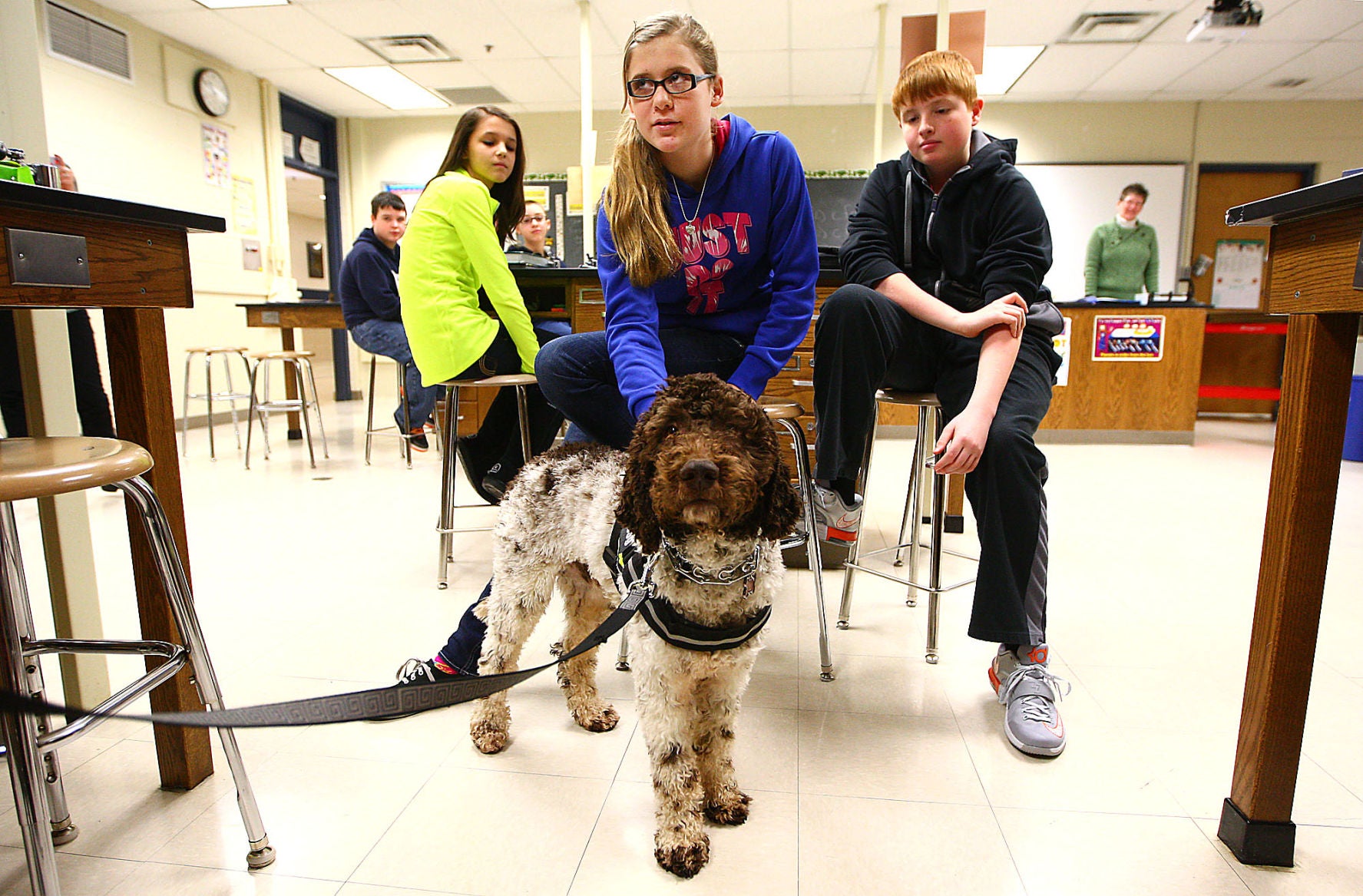Therapy dogs giving comfort in schools
Published 5:30 am Friday, January 9, 2015
A Kokomo, Ind., middle school’s newest employee got to know the school a little better this week, offering students a wet nose, puppy dog eyes and the chance to pet his fluffy head.
Gulliver, an 11-month-old Italian water dog, is Taylor Middle School’s new therapy dog. Escorted by his guardian, school counselor Caitlin Herr, Gulliver met teachers and members of the student Gulliver Committee before being introduced to the rest of the student body.
Gulliver is just one of many dogs joining students and teachers in classrooms across the country. It’s a trend that has become progressively more mainstream in recent years as nursing homes, hospitals and other facilities experience success using therapy dogs.
“There are a variety of reasons why people have really begun to think about not just dogs, but other animals in schools,” said Dr. Aubrey Fine, a professor of education at Cal-Poly State University who has authored several books on the topic of pet therapy. “There’s research that documents that children with specific special needs find (dogs) to be sort of a social lubricant, a comfort, a buffer for kids that may have anxieties.”
At Taylor, the hope is that Gulliver’s regular visits will help relieve stress and free students up to focus more on their studies.
“When we have a student who’s having a hard time, a meltdown, helping them move around is always beneficial — like laps around the hallway,” said Phyllis Rogers, a special education teacher who helped Herr research the benefits of school therapy dogs. “Having Gulliver to do that will them will be beneficial.”
In addition to their salutary value, therapy dogs can serve as a low-cost teaching tool, especially when the lessons include kindness and acceptance, according to Mary Burch, the Canine Good Citizen Director for the American Kennel Club.
“Dogs provide unconditional love and they do not make judgments based on human abilities or disabilities, the way a person dresses or their socio-economic status,” Burch said. “They are different than school bullies.”
In Kokomo, students and teachers believed in the benefits enough to apply for grants and hold fundraisers to cover the costs for purchasing and training Gulliver. The school board did not want to pay the expenses out of the school’s regular budget.
Eighth grader Makayla Williams, a member of the Gulliver Committee, said it was a lot of hard work to plan the bake sale, Halloween costume fundraiser and other events, but it was worth it for Gulliver.
“He’s adorable. I really love him,” Williams said, as Gulliver sat at her feet in Herr’s office. “Honestly, I’m not a big animal person, but I love him.”
Gulliver is also a reminder that, although golden retrievers are favored by many organizations, almost any breed can be suitable for the task of providing comfort and friendship to students.
“For settings where there are very active teenagers with behavioral issues, a bigger dog may do better than a toy breed,” Burch said. “For settings where the dog is used for a reading program, a quiet dog who is happy to lay beside a child who is reading would be the dog of choice. But all dogs can be trained to be therapy dogs.”
The Kokomo Tribune in Kokomo, Ind., contributed to this story.





